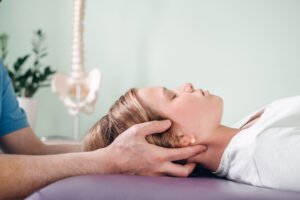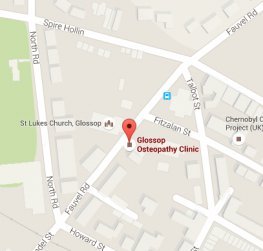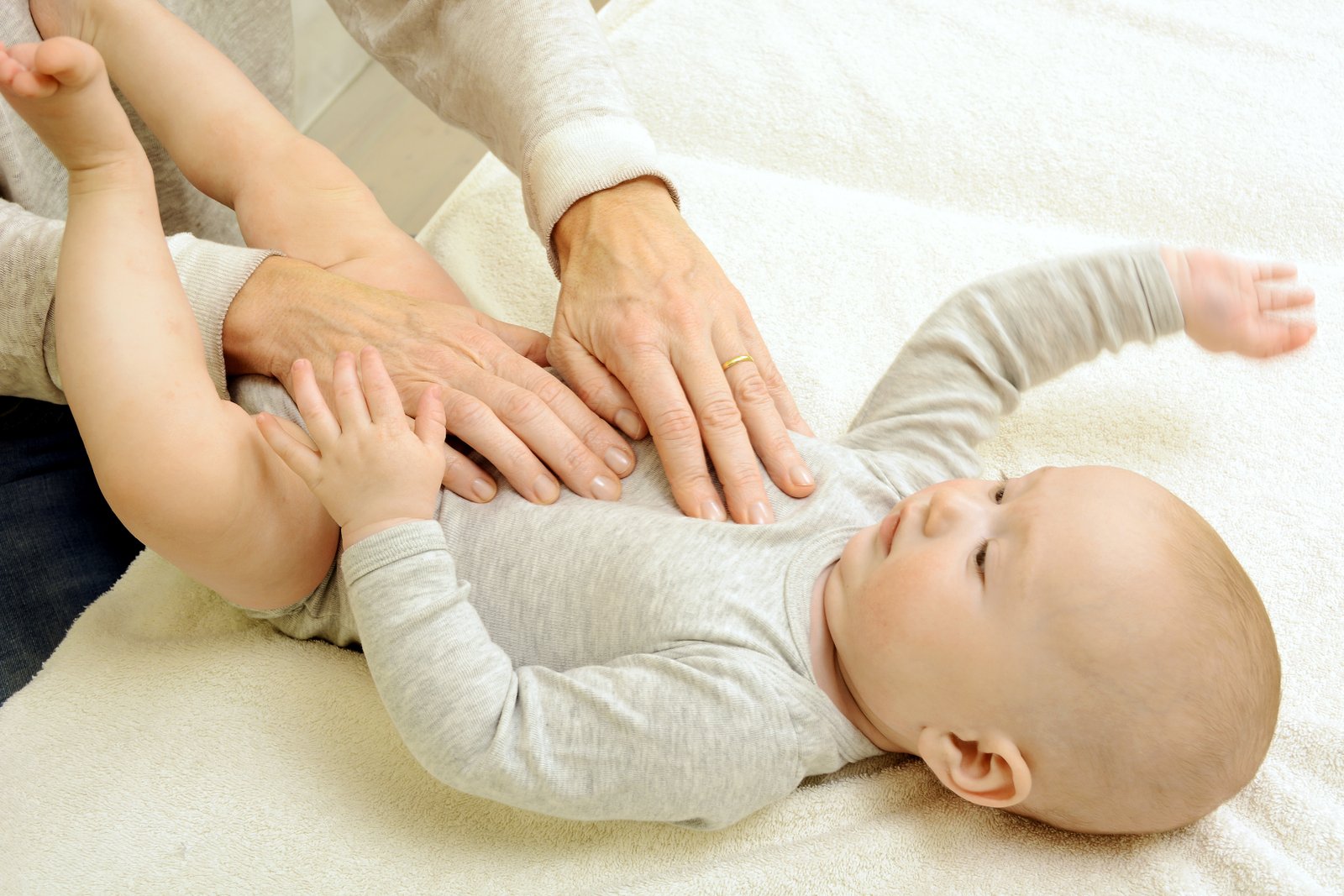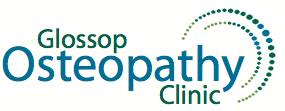What is Cranial Osteopathy?
 Cranial osteopathy is not different to osteopathy, it is the name given to a subtle and refined approach to osteopathy that follows all the principles of osteopathy, but that includes the anatomy and physiology of the head.
Cranial osteopathy is not different to osteopathy, it is the name given to a subtle and refined approach to osteopathy that follows all the principles of osteopathy, but that includes the anatomy and physiology of the head.
Cranial osteopaths use a highly trained sense of touch to feel subtle changes of tension and tissue quality in the living anatomy of the whole body, and to diagnose areas of strain or dysfunction.
The osteopath is often drawn to areas in the body that have been affected by past events, such as old accidents and injuries. The body may have learned to compensate for a traumatic event or injury and the patient may be unaware that there is anything wrong, but the effects may still be present and relevant to current symptoms.
Diagnosis and treatment are intimately linked as the osteopath works to activate the innate ability of the body to heal itself, and by offering gentle and specific support where it is needed to bring the tissues into a state of balance and release, to restore it to health.
What sort of patients or conditions can be helped with cranial osteopathy?
This approach to osteopathy is a way of viewing the body rather than a type of technique and it can be used on every patient – osteopaths treat people not conditions. Cranial osteopathy is widely known for the treatment of babies but is equally effective for children, adults and the elderly. In any osteopathic treatment, the whole body is involved and improvements are often noted in different areas and different systems rather than in just the symptomatic one.
What does cranial treatment feel like?
Cranial osteopathic treatment is very gentle and relaxing. During the treatment some people are aware of different sensations, such as mild tension, aching or sensitivity that gradually disappear, or of feelings of warmth and relaxation. Other people are unaware of anything happening at all during the treatment but are aware that they feel very different afterwards. Most people become deeply relaxed during treatment and it is not uncommon for people to fall asleep.
Does cranial osteopathy have a scientific basis?
With every advance in scientific understanding of physiology, in particular the physiology of fascia, fluids and electromagnetics in the body, we are gradually validating the theory and palpatory experiences of cranial osteopaths. Below is a list of clinical studies investigating the effects of cranial osteopathic treatment.
Research relevant to cranial osteopathy
Baltazar G A, Kolwitz C, Petrone P, et al. (March 18, 2020) Osteopathic Manipulative Treatment Relieves Post-concussion Symptoms in a Case of Polytrauma. Cureus 12(3): e7317. doi:10.7759/cureus.7317 https://www.cureus.com/articles/28591-osteopathic-manipulative-treatment-relieves-post-concussion-symptoms-in-a-case-of-polytrauma?fbclid=IwAR2S4O-eiDGZMww2cGAbmaTIrt2sEPg1wJnXATxayU5XLRhl67K3VvcuDos
Herring, S.W. and Teng, S. (2000). Strain in the braincase and its sutures during function. Am. J. Phys. Anthropol., 112: 575-593. doi:10.1002/1096-8644(200008)112:4<575::AID-AJPA10>3.0.CO;2-0 See https://www.ncbi.nlm.nih.gov/pmc/articles/PMC2813197/
Herzhaft-Le Roy, J., Xhignesse, M., & Gaboury, I. (2017). Efficacy of an Osteopathic Treatment Coupled With Lactation Consultations for Infants’ Biomechanical Sucking Difficulties: A Randomized Controlled Trial. Journal of Human Lactation, 33(1), 165–172. https://doi.org/10.1177/0890334416679620
Matsumae M, Kuroda K, Yatsushiro S, et al. (2019). Changing the Currently Held Concept of Cerebrospinal Fluid Dynamics Based on Shared Findings of Cerebrospinal Fluid Motion in the Cranial Cavity Using Various Types of Magnetic Resonance Imaging Techniques. Neurol Med Chir (Tokyo). 59(4):133-146. doi:10.2176/nmc.ra.2018-0272 See https://www.ncbi.nlm.nih.gov/pmc/articles/PMC6465527/
Moore, C. I., & Cao, R. (2008). The hemo-neural hypothesis: on the role of blood flow in information processing. Journal of neurophysiology, 99(5), 2035–2047. doi:10.1152/jn.01366.2006
Rasmussen TR, Meulengracht KC (2020) Direct Measurement of the Rhythmic Motions of the Human Head Identifies a Third Rhythm. Journal of Bodywork & Movement Therapies (in press). https://doi.org/10.1016/j.jbmt.2020.08.018
Sergueef N, Nelson KE, Glonek T. (2002). The effect of cranial manipulation on the Traube-Hering-Mayer oscillation as measured by laser-Doppler flowmetry. Altern Ther Health Med. 8(6):74-76. See https://pdfs.semanticscholar.org/99ca/39fba671bd73e1b24bb898d1f075360d61ee.pdf
Tobey H, Lucas T, Bledsoe D, Mykins M, Campbell C, Berr SS, Sasser T, Helm R, Brolinson PG, Klein BG, Costa BM (2019). Effect of Osteopathic Cranial Manipulative Medicine on an Aged Rat Model of Alzheimer Disease. J Am Osteopath Assoc 2019;119(11):712–723. doi: https://doi.org/10.7556/jaoa.2019.121
23 Fauvel Road, SK13 7AR
 Daytime & Evening Appointments Available. Open Monday - Saturday. Book Online Now.
Only 5 minutes walk from the train station. Click here for directions»
Daytime & Evening Appointments Available. Open Monday - Saturday. Book Online Now.
Only 5 minutes walk from the train station. Click here for directions»
Children & Maternity
 We use a variety of techniques such as manipulation of the spine & joints as well as gentle yet effective techniques such as cranial osteopathy and myofascial release.
Learn More»
We use a variety of techniques such as manipulation of the spine & joints as well as gentle yet effective techniques such as cranial osteopathy and myofascial release.
Learn More»
About the Practitioners
 Chris and Kate are both Registered Osteopaths and graduates of the European School of Osteopathy. We both treat a wide range of patients from newborns to the elderly.
Click here to read more about the practitioners»
Chris and Kate are both Registered Osteopaths and graduates of the European School of Osteopathy. We both treat a wide range of patients from newborns to the elderly.
Click here to read more about the practitioners»

